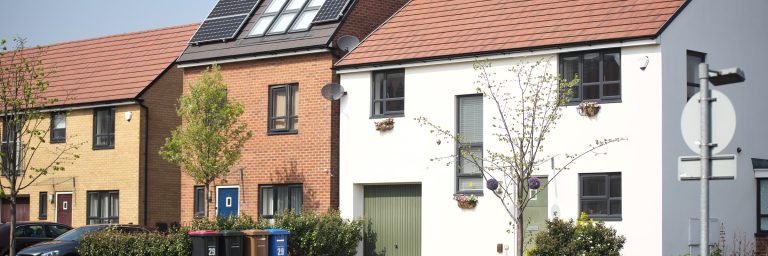The Mayor of London, Sadiq Khan has today set out bold proposals to transform Oxford Street, including turning the road into a traffic-free pedestrianised avenue, creating a beautiful public space. The plans backed by the new government would ensure Oxford Street becomes a driver of London’s economic prosperity for decades to come. Today the Mayor Sadiq Khan will say he wants Oxford Street to “once again become the leading retail destination in the world.” The Mayor has previously tried to implement major changes to Oxford Street, but was blocked from implementing his plans. Now, with the new Government taking a partnership approach to working with cities and Mayors, there is agreement to work together with a view to unlocking Oxford Street’s full potential for the benefit of London and other parts of the UK. The proposals would deliver a much-improved experience for shoppers, residents, workers and tourists visiting Oxford Street and the surrounding area, returning this part of the capital to its former glory. Supported by ministers, today the Mayor has confirmed that he intends to designate a Mayoral Development Area to bring forward the regeneration of Oxford Street.* As part of this, the Mayor is proposing that a Mayoral Development Corporation (MDC) is established, which will haveplanning powers to provide the framework for delivery of a world-leading scheme that works for residents, visitors and businesses. Oxford Street is famous across the world. It still welcomes more than 500,000 visitors every day and generates approximately five per cent of the capital’s economic output (GVA), the equivalent of £22.75bn (in 2019)*. It is home to numerous flagship stores, including Selfridges and John Lewis, as well as being a key commercial centre. Although Oxford Street remains a vital part of the UK’s tourism, leisure and retail offer, generating revenue for the Exchequer that is reinvested across the country, it is in need of major regeneration. Competition from online retailers and out-of-town shopping centres, the closure of flagship department stores, and the prevalence of ‘candy stores’ have put significant strain on Oxford Street’s attractiveness, while tourism numbers have not fully recovered since the pandemic. The Mayor is determined to re-invent and transform Oxford Street, working with businesses and Westminster City Council to create one of the finest public spaces in the world and making the area substantially greener, cleaner and safer for everyone. The Mayor believes his proposals would turn Oxford Street into a more attractive and thriving modern retail and leisure destination attracting more tourists, increasing footfall and spending. It’s likely this would generate additional economic activity and increased tax revenue, as well as boosting London’s night-time economy, meaning that it can once again compete with other international high street destinations, such as Times Square in New York, the Avenue des Champs-Elysees in Paris and Las Ramblas in Barcelona. The Mayor of London, Sadiq Khan, said: “Oxford Street was once the jewel in the crown of Britain’s retail sector, but there’s no doubt that it has suffered hugely over the last decade. Urgent action is needed to give the nation’s most famous high street a new lease of life. “I am excited to be working with the new Government, and local retailers and businesses, on these plans – that will help to restore this famous part of the capital to its former glory, while creating new jobs and economic prosperity for the capital and the country. “I want Oxford Street to once again become the leading retail destination in the world.” “The transformation of Oxford Street will be a leading example of how working together – City Hall and the new Government – we can build a better London for everyone.” Angela Rayner, Deputy Prime Minister said: “Oxford Street is a world-renowned shopping destination and we want it to stay that way. By working with the Mayor and local leaders, we can ensure it gets the boost it needs.” “This plan to revitalise Oxford Street will drive growth by creating new jobs, generating economic activity, and giving a much-needed boost to London’s night-time economy.” Peter Ruis, Executive Director for John Lewis, says: “Oxford Street has been home to the first ever John Lewis store since 1864. We’re extremely proud of our place on the street and are investing significantly in our flagship, next month opening one of the country’s biggest Beauty Halls and welcoming Waterstones. We’re delighted to see the plans announced today to transform ‘the nation’s high street’ and look forward to welcoming even more visitors to London’s West End.” John Dickie, CEO of BusinessLDN, said: “Oxford Street is London’s flagship high street and an attraction for visitors from across the country and all over the globe. As a key strategic site that spans borough boundaries, the Mayor has an important role to play in investing in and helping to improve the area for the benefit of Londoners, businesses and visitors. We look forward to engaging with the new Mayoral Development Corporation as well as Westminster City Council, the London Borough of Camden, the New West End Company and other stakeholders to help to make Oxford Street an even more vibrant and attractive place to visit.” John Dickie, CEO of BusinessLDN, said: “Oxford Street is London’s flagship high street and an attraction for visitors from across the country and all over the globe. As a key strategic site that spans borough boundaries, the Mayor has an important role to play in investing in and helping to improve the area for the benefit of Londoners, businesses and visitors. We look forward to engaging with the new Mayoral Development Corporation as well as Westminster City Council, the London Borough of Camden, the New West End Company and other stakeholders to help to make Oxford Street an even more vibrant and attractive place to visit.” Barbara Stoll, Director of the Clean Cities Campaign said: “This is fantastic news and a once-in-a-generation opportunity to boost the West End’s economy while tackling London’s air quality crisis. Cities worldwide have shown that pedestrianisation increases foot traffic, boosts sales, and














